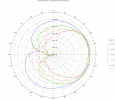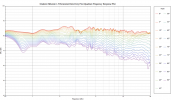There is a nice overview of these sort of speakers here
https://www.linkedin.com/pulse/directivity-control-part-1-survey-loudspeaker-systems-steve-mowry
and a follow up page with a design
https://www.linkedin.com/pulse/dire...se-article_more-articles_related-content-card
If rear rejection is not the most important aspect then a supercardioid has a higher DI in the forward direction and is what you tend to get with a rear cancelling driver like the W371.
Thanks for the explanation and definitions. The definition of the term "cardioid" via the polar diagram, DI, the shape of the radiation pattern and the depth of the "null" at 180°, is what I was missing to properly understand the previous posts.

Last edited:





